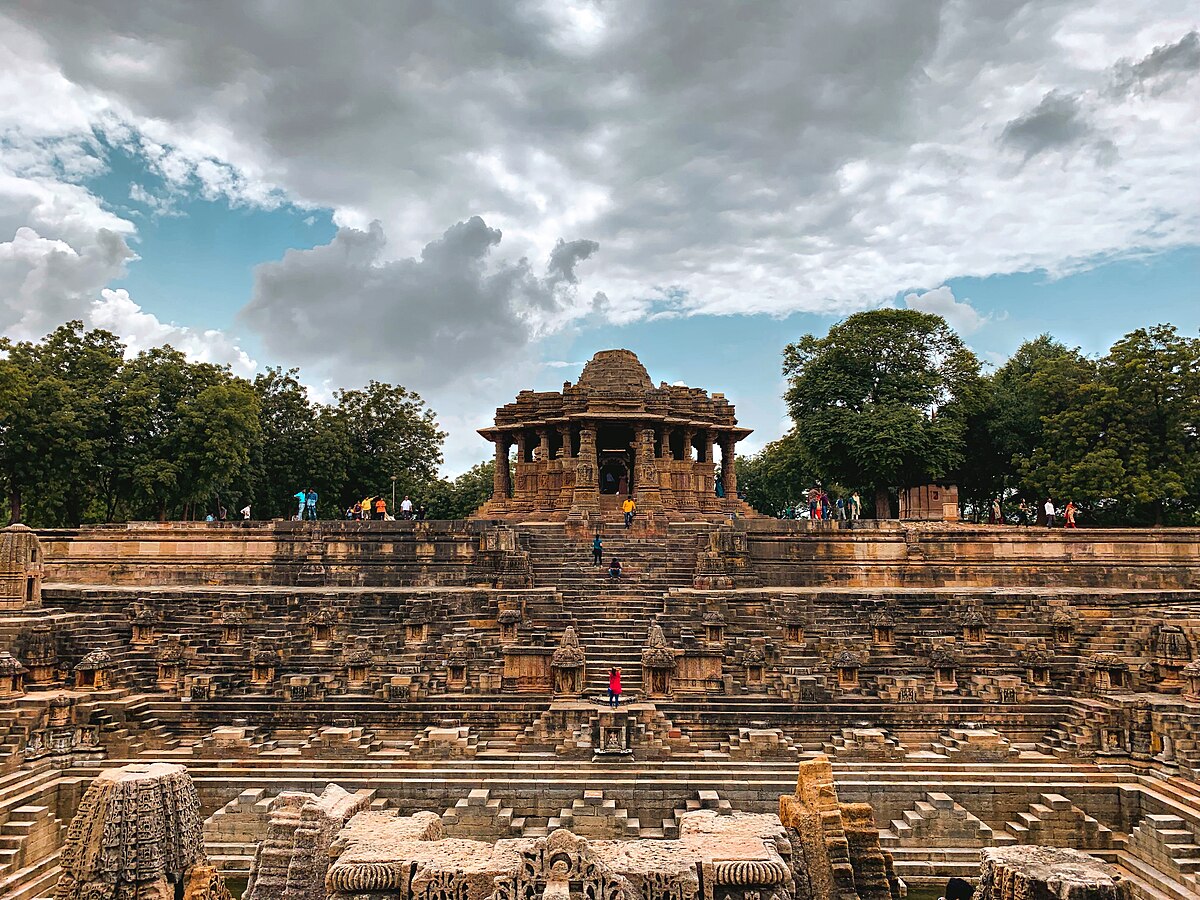The celebration of this beautifully landscaped village is not only from its divine intervention but the recent addition of the Suryagram (Sun Village) project. Under this new governmental program, the village's electricity needs are now fully generated through Solar Photo-Voltaic (PV) panels within its boundary, making Modhera, India’s first 24×7 solar-powered village.
Solarisation of Modhera was undertaken under the project called ‘Suryagram’ (translating as Sun Village), which is helping its 8,000-odd inhabitants of the village to unburden themselves from the consumption of conventional energy from the electrical grid.
However, electricity bills of only half of the households have gone down, said Mandip Parmar, a resident of Modhera. There are cases where some of them are enjoying zero bills and even getting credit for their electricity bills.
After solarisation, now the sprawling Sun Temple complex at Modhera village comes alive every evening with a 3D light and sound show. Harshad Patel, owner of an eatery near the Unesco world heritage site, says, “the temple used to close at 6 pm earlier. Now it’s open till late in the evening.”
Looking at the overall consumption of electricity of the village, it has not only become a ‘net-zero’ energy community, meeting 100% of energy needs through on-site solar power, but the households here have also started contributing excess power to the transmission grid thereby rendering the project successful from the environmental perspective.
Rajendra Mistry, in charge of the Modhera solarisation project, says
As part of the Suryagram project, 1 kilowatt (KW) solar panels have been installed on the roof of almost every house in Modhera in two phases. Work for the first phase was initiated in February 2022. In August this year, the solarisation of the Modhera area was completed. Nearly 1,380 households in the Modhera area have solar rooftop systems, including 1,177 at Modhera, 101 in Sujjanpura, and 105 in Samlanpura villages.
Since last four months, our electricity bills have gone down drastically. Before the installation of rooftop solar systems our bimonthly electricity bills used to remain at Rs 3000. Since July we have been paying below Rs 1000,
says a septuagenarian resident of Modhera, Deepsinh Vaghela. According to Vaghela, his 12-member family is freely using fans, television, freezers, and other electric equipment.
Modhera village resident Jivanbhai Patel’s electricity bill for his three-room house has gone down from Rs 1,000 to as low as below Rs 300 in the past six months.
Dhuniben Rathod, a 65-year-old widow, is still waiting for her power bill to come down. According to her, normally she gets an electricity bill of about Rs 500, and even after the installation of solar panels the bill amount has not dipped.
RG Patel, deputy engineer of Gujarat Power Corporation Limited (GPCL), the implementing agency for the 'Suryagram' project, said initially only a few families agreed to the installation of solar rooftop systems but later almost all the households decided to join the initiative. Those who joined in phase II would start getting the benefits in the next couple of months, claimed Patel.
Apart from solar rooftop panels, GPCL has set up a 6 MW ground-mounted solar power plant with a 15 MWh Battery Energy Storage System (BESS) at Sujjanpura village, around 1 km from Modhera.
In solar power projects, the electricity generated is usually passed on to the grid without storing it anywhere. In view of the limitations of solar power generation that takes place only during day time, the implementation of BESS has helped overcome the gap in 24×7 electricity supply in the Modhera area, said Vikramsinh Jhala, site in-charge of the ground-mounted solar power plant.
The entire daytime power demand of Modhera is met through the solar project directly and at night the demand is catered through BESS, said Jhala, adding that on average during a normal day more than 30,000 units of solar power is generated in the Modhera area. Of these, nearly 5,000 to 5,500 units are consumed during the daytime and 6,000 units are stored in BESS for electricity supply to villagers and Sun Temple at night, and the excess 12,000 units are transmitted to the grid on daily basis, he added.
Under the Suryagram project, 316 KW rooftop solar systems have also been installed on government buildings that include ST Depot, a police station, and Primary Health Centre. Sensor-based smart streetlights have been installed near Sun Temple. Besides, a 50KW solar parking infrastructure with 150 kWh battery storage and electric charging stations for electric vehicles has been set up near the temple.
"Solar rooftop has been installed in our school. We have 10 smart classes, 10 projectors and 22 rooms with four fans tube lights in each room. We used to pay more than Rs 5000 in electricity bills before the installation of solar panels. In the last six months, there have been zero electricity bills and we have nearly Rs 17000 credit on our electricity bill," says Mahendrabhai Nai, Principal, of Modhera Anupam School.
Interestingly, a large temple campus of Prime Minister Narendra Modi’s family Goddess (Kuldevi) Modheswari Mataji has not yet become part of the project. Modheshwari temple is situated just a stone's throw from the ancient Sun Temple. Project in-charge Mistry said that trustees of the temple have agreed recently the installation of 50 KW rooftop solar panels.
“We will be able to solarise Modheswari Mata temple in the next three months,” he claimed.





